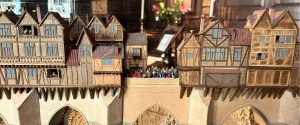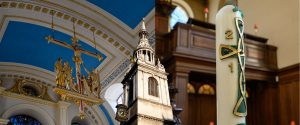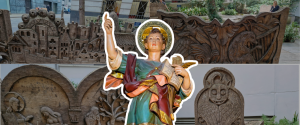The Queen’s House by Inigo Jones in Greenwich is frequently described as the first building in England to be based on the work of the Italian architect Palladio, and even more grandly as the first piece of truly Renaissance architecture in the country.
The Palladio part is undoubtedly right in part at least – his influence is visible in the balustrade running round the roof, the first-floor loggia on the Southern (Greenwich Park) side, and the dual, curved grand stairway on the Northern front. The claim to be the first properly Renaissance-style building is accurate in so far as the building relies on restraint in decoration and on strict geometrical proportions. However, the description does immediately raise questions about the validity of the term ‘Renaissance’, which is used to describe in the same breath developments in Northern Italy in the 1420s and here a building in England built a full two centuries later on.
The claim to be the first Palladian building, like that to be the first Renaissance piece of architecture in this country, is also a bit contentious as it took such a long time to build. It was little more that a series of foundations by the time Jones had already completed the Banqueting Hall in Whitehall, which was again clearly influenced by the buildings and drawings of Palladio.
Greenwich Palace and the park to its South were settled on Anne of Denmark by James I in 1605. Jones, who had been made Surveyor of the King’s Works in September 1615, was commissioned to build a house for her, though it had not got far when she died in 1619. The building, such as it was, was then given to Prince Charles, and when he became king, his wife Queen Henrietta Maria asked Jones to complete the house, which he did between 1629 and 1640.
The main road from Deptford to Woolwich used to run between the grounds of the palace and those of the park immediately to the South. This was inconvenient for royals who would have to cross the road in order to go for a walk and gave rise to an odd feature of the house: it was built in two halves on either side of the road in an ‘H’ shape with a central bridge connecting the two sections (two further covered bridges were added to the sides later). The road was later moved to the North, and now instead creates an inconvenience for modern visitors wanting to see both the Royal Naval Hospital on the site of the former palace, and the Queen’s House.
Inside Jones’s building, the Palladian influence is apparent in the main room of the house – an entrance hall in the form of a cube with a gallery at first-floor level. The ceiling was painted by Orazio Gentilleschi, but was taken to Marlborough House by Queen Anne’s favourite, Sarah Duchess of Marlborough.
The claims for the Queen’s House to be the first Palladian and first Renaissance building may be a little inaccurate, but the fact that have been made at all reflects the importance of this building in the heart of Greenwich.
Find out more about Inigo Jones’ masterpiece. Book tickets for Ian McDiarmid’s Greenwich London Walk now. Private tour also available here.



